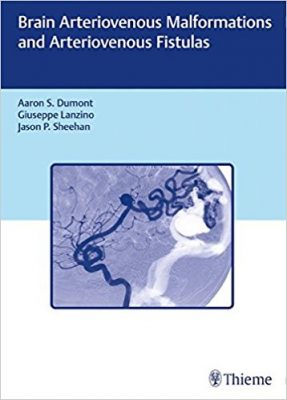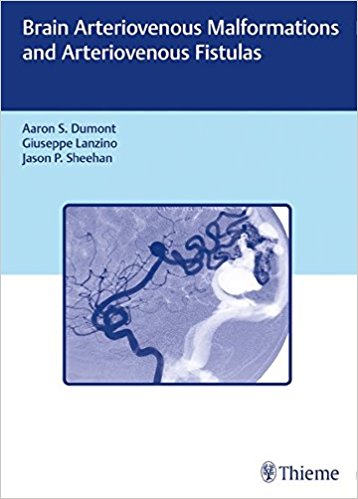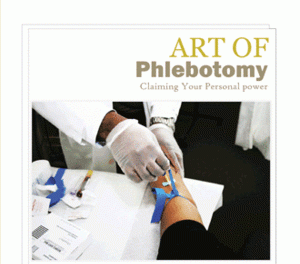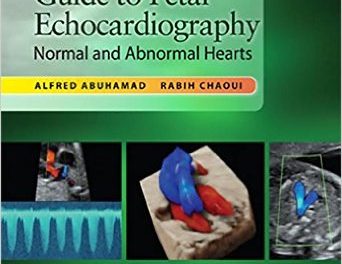 Editors: Aaron S. Dumont, MD; Giuseppe Lanzino, MD; and Jason P. Shaheen, MD
Editors: Aaron S. Dumont, MD; Giuseppe Lanzino, MD; and Jason P. Shaheen, MD
Publisher: Thieme – 274 pages, with 250 illustrations
Book Review by: Nano Khilnani
Embolization and radiosurgery treatment of arteriovenous malformations (AVMs) and arteriovenous fistulas (AVFs) are technological advancements in the last 20 years or so that have improved our understanding of these disorders and their treatment. They were one of the toughest cases that neurologists dealt with, writes Dr. Gary Steinberg in his Foreword.
Other developments besides the ones cited above that have helped neurologists make the treatment of AVMs and AVFs safer and more effective are the following:
- Advances in neuroanesthesia, electrophysiological monitoring and navigation
- New knowledge of their natural history
- Surgical instrumentation
Eighty-one neurologists from mainly the United States, and also from seven other countries – Brazil, Canada, India, Israel, Italy, Taiwan, and the United Kingdom – authored the 31 chapters of this book on various types of malformations fistulas in the arteries and veins. As a broad overview of the diagnostic and treatment options for these abnormalities, we list the titles of those chapters here:
- Cerebrovascular Anatomy and Implications for Arteriovenous Malformation Treatment
- Development of the Cerebrovasculature and Pathogenesis of Arteriovenous Malformations and Arteriovenous Fistulas
- Physiology and Hemodynamics of Arteriovenous Malformations and Arteriovenous Fistulas
- Natural History, Clinical Presentation, and Indications for Treatment of Brain Arteriovenous Malformations
- Syndromic Arteriovenous Malformations
- Natural History of Arteriovenous Fistulas, Clinical Presentation, and Indications for Treatment
- Management of Unruptured Brain Arteriovenous Malformations
- Preoperative and Postoperative Imaging Evaluation of Arteriovenous Malformations
- Intraoperative Imaging for Arteriovenous Malformations and Dural Arteriovenous Fistulas
- Intraoperative Neurophysiological Monitoring during Surgical and Endovascular Treatment of Cerebral Arteriovenous Malformations
- Critical care and Neuroanesthetic Considerations for Arteriovenous Malformation and Arteriovenous Fistula Surgery
- Classification of Brain Arteriovenous Malformations and Fistulas
- Step-by-Step Microsurgical Resection of Arteriovenous Malformations
- Surgical Approaches and Nuances for Lobar Arteriovenous Malformations
- Surgical Treatment of Cerebellar Arteriovenous Malformations
- Surgical Treatment of Intracranial Dural Arteriovenous Fistulas
- Surgery of Basal Ganglia. Thalamic, and Brainstem Arteriovenous Malformations
- Hemorrhage from Arteriovenous Malformations and Its Management
- Fundamentals of Endovascular Treatment for Arteriovenous Malformations and Arteriovenous Fistulas
- Endovascular Treatment of Arteriovenous Malformations of the Supratentorial Compartment
- Endovascular Treatment of Arteriovenous Malformations of the Infratentorial Compartment
- Endovascular Treatment of Dural Arteriovenous Fistulas of the Brain
- Vein of Galen Aneurysmal Malformation
- Radiosurgical Basics for the Treatment of Arteriovenous Malformations: Indications and Techniques
- Stereotactic Radiosurgery for Brain Arteriovenous Malformations
- Radiosurgery for Dural Arteriovenous Fistulas: Indications and Outcomes
- Multidisciplinary Management of Arteriovenous Malformations
- Treatment of Inoperable Cerebral Arteriovenous Malformations
- Considerations for Pediatric Arteriovenous Malformations
- Management of Residual and Recurrent Arteriovenous Malformations
- Epilepsy Management for Arteriovenous Malformations
Online videos that demonstrate various treatment modalities can be found on this website below. Simply go to the inside front cover of this book, retrieve the access code and register your copy here: www.MediaCenter.Thieme.com.
While more research has widened our knowledge, and technology has enabled specialists to treat their specialists more easily and effectively, there are still pending questions requiring answers:
- Which patients with AVMs and AVFs should be treated?
- Which therapeutic modality or combination of modalities is best?
- How can we reduce complications and morbidity further?
This book written by experts in the field in seven countries addresses these and other questions through the 270+ pages of this unique book focused on this subject.
AVMs are usually congenital, and nearly nine out of 10 people (88 percent) who have AVMs have no symptoms, and they are discovered in the course of examination or treatment for an unrelated disorder, according to an article in Wikipedia. In some cases its expansion or a micro-bleed can cause epilepsy, neurological deficit, or pain
But for the other 12 percent who have AVMs, the symptoms are pain, headaches, epileptic seizures, difficulties with movement coordination, including muscle weakness, and even paralysis. The lack of symptoms such as pain in most people who have AVMs contributes to the difficulty of discovering who have such disorders, and treating them appropriately.
This valuable book provides detailed coverage of AVMs and AVFs, with 250 illustrations, and videos on their treatment. There are only a few books out there on this subject, and this is one of the best ones. It’s a good book to add to the libraries of established and aspiring neurologists, including fellows, residents and students.
Editors:
Aaron S. Dumont, MD, FACS, FAHA is Charles B, Wilson Professor and Chairman of the Department tin the Department of Neurosurgery, and Director of the Tulane Center for Clinical Neurosciences in New Orleans, Louisiana.
Giuseppe Lanzino, MD is Professor of Neurosurgery in the Department of Neurological Surgery at the Mayo Clinic in Rochester, Minnesota.
Jason P. Sheehan, MD, PhD is Vice Chair and Harrison Distinguished Professor of Neurological Surgery in the Department of Neurosurgery, Radiation Oncology, and Neuroscience at the University of Virginia in Charlottesville, Virginia.







